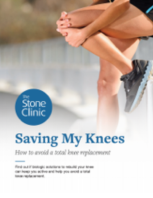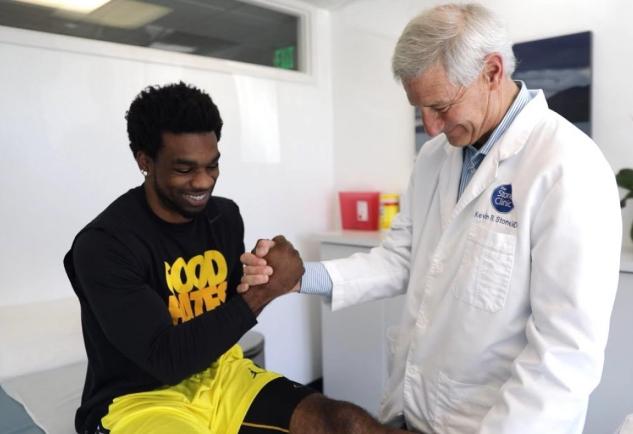Robotic Joint Center
We have patients now running triathlons and (ultra)marathons, climbing mountains, skiing a hundred days a year on their replaced parts inside their knee. The groundbreaking innovations in robotic surgery are redefining the limits of our athletes and expanding the expectations of what is possible after knee replacement.
All Robotic Surgery
at The Stone Clinic:
All Robotic Surgery
at The Stone Clinic:
- Extremely high accuracy of anatomical placement
- A more natural knee motion
- Quick recovery
- No muscles are cut, less tissue/bone removal
- Personalized surgical plan
- Small incisions, less scarring
- No staples to remove
- Less pain & meds
- Minimal blood loss & extremely low blood clot risk
- Outpatient procedure with no overnight hospital stay required
Unique Partial Knee
Replacement benefits:
Unique Partial Knee
Replacement benefits:
- All 4 stabilizing ligaments remain intact (ACL, PCL, MCL, LCL)
- Non-arthritic articular cartilage left intact
- A unicompartmental replacement may be expanded into a bi-compartmental or total knee replacement later in life
Unique Total Knee
Replacement benefits:
Unique Total Knee
Replacement benefits:
- Advanced knee implant that fuses directly with bone to allow a return to high-level and impact sports.
Enter your email to receive your guide

Most likely not (or at least not yet). Despite the overwhelming amount of knee replacements prescribed in the US, up to 80% of people told they need a Total Knee Replacement may NOT need one according to the data from an Oxford study of partial knee replacements. Usually, one part of the knee is the most worn and is causing most of the pain. This damaged part can either be treated with a cartilage and meniscus replacement (called a BioKnee) or with a partial knee replacement.
Most likely not (or at least not yet). Despite the overwhelming amount of knee replacements prescribed in the US, up to 80% of people told they need a Total Knee Replacement may NOT need one according to the data from an Oxford study of partial knee replacements. Usually, one part of the knee is the most worn and is causing most of the pain. This damaged part can either be treated with a cartilage and meniscus replacement (called a BioKnee) or with a partial knee replacement.
Most likely not (or at least not yet). Despite the overwhelming amount of knee replacements prescribed in the US, up to 80% of people told they need a Total Knee Replacement may NOT need one according to the data from an Oxford study of partial knee replacements. Usually, one part of the knee is the most worn and is causing most of the pain. This damaged part can either be treated with a cartilage and meniscus replacement (called a BioKnee) or with a partial knee replacement.


